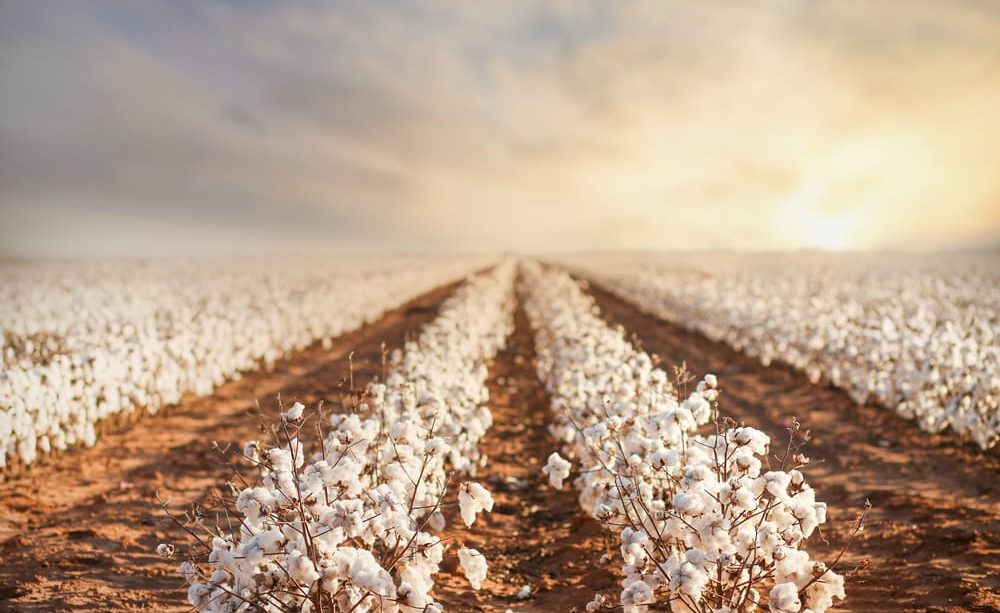A History of Cotton in Australia
Australia may not be the top exporter of cotton, with a contribution of around 2.1% to the world’s cotton exports. However, it’s known for growing high-quality cotton that can command a high selling price and for obtaining a high yield from seed planted in production areas.
So, where did this Australian relationship with cotton begin and what is the story of cotton in the country? Australian cotton history started back in the 19th century but everything did not go well.
Key points
- The first cottonseed was brought into Australia in 1788 and by 1830 three bags of cotton were exported
- The construction of the Burrendong Dam in 1966 caused cotton production to boom in Macquarie
- research and development has meant that the water use efficiency of the industry has improved by around 240% since the 1970s
Need a Quote?
Cotton farm
 RECOMMENDED ARTICLE
RECOMMENDED ARTICLE
Early days for cotton in Australia were not successful
The first cottonseed was brought into Australia in 1788 and by 1830 three bags of cotton were exported. During the remainder of the century, more areas of dryland cotton were planted in Queensland.
RECOMMENDED ARTICLE
The cotton industry continued on at a very slow pace. In 1926 the Queensland Cotton Marketing Board was created in the hope of improving the situation. However, the industry had faded greatly by 1954 due to drought and limited industry expertise. The fluctuating price of cotton globally was also a problem.
A new era with the building of the Keepit Dam
Ironically, the Keepit Dam was not built with the cotton industry in mind. However, after the dam was built, in 1958, it attracted the attention of Nick Derera. Derera was previously the director of Hungarian Cotton Research. He put his experience to use trialling varieties of cotton for the NSW Department of Agriculture.
The results of this research reached the ears of Californian cotton growers Paul Kahl and Frank Hadley. In 1962, Kahl and Hadley, together with Derera, grew their first hectares of cotton in Australia. The yield of 1.5 bales an acre was the start of their relatively successful association with Australian cotton.
Onwards with the industry
Since the early days of cotton in Australia, there have been ups and downs. The events that have taken place in the industry include:
- The construction of the Burrendong Dam in 1966 which caused cotton production to boom in Macquarie. Although, the area has had problems with its cotton crop more recently, thanks to drought.
- Australian cotton production reached 87,000 bales in 1971 before increasing to 110,000 bales in 1975.
- The building of the Pindari and Glenlyon dams increased production capacity in Queensland by 1977.
- A record crop yield of 3.4 million bales in 2001.
- A 60% drop in crop yield from 2002 to 2004 which was caused by the worst drought in a century.
The Australian cotton industry has certainly had an interesting journey up to the present day.
Cotton in Australia today
Today, most of the cotton growing in Australia takes place in New South Wales and Southern Queensland. The majority of farms run by growers in the Australian cotton industry are family-owned; around 90% altogether.
Impressively, research and development has meant that the water use efficiency of the industry has improved by around 240% since the 1970s. This has led to the industry being regarded as one of the most water-efficient in the world. The use of pesticides in the industry also reduced by 85% between 2000 and 2010.
Despite the ups and downs of the industry over the years, each cotton producer has added to respectable annual yields for the country. The average yield is 641,806 metric tonnes over the last ten years.
The crop is one of the largest export earners for rural communities in the country. It is one of the central factors in supporting more than 150 rural communities.
For a crop that has not been cultivated successfully in Australia for very long, cotton has come a long way. It’s an important feature for many family owned farms where cotton is grown and growers produce vital support for the rural communities around them.
For more information
2 - 2Shares


 RECOMMENDED ARTICLE
RECOMMENDED ARTICLE